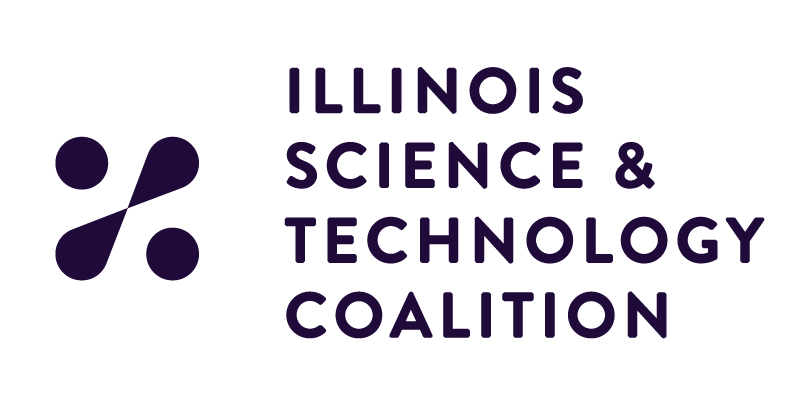NOTE: The nation's community of technology-based economic development organizations is in its annual report season, and we've already seen several releases from SSTI members. All document TBED's impact on advancing research, moving it to market, and helping businesses improve their profitability and competitiveness.
To help the TBED community prepare their own annual reports, SSTI is speaking with a few of our members to learn more about their evolving approaches to preparing their annual reports. This week, we share insights from our conversation based on an interview with Kate Calabra, interim CEO of the Illinois Science and Technology Coalition. The first three parts of this four-part series are available here, here and here.

In recent years, the Illinois Science & Technology Coalition’s (ISTC) annual report was a landing page on the organization’s website. It was primarily text summarizing what the organization had done. However, the most recent report, a PDF document that spans 25 pages (minus front and back covers), is much different. That difference was "definitely intentional," said Kate Calabra, interim CEO of the Illinois Science and Technology Coalition.
“Our approach this year was to make the report more of an asset for our members and strategic partners,” said Calabra. "The concept was for it to be a collection of our successes, highlighting each of our programs across our four pillars: innovation, data, education and advocacy. Our successes are predominantly attributed to our partners as a membership organization. We could not do what we do without them. So, it shows the importance of their roles.”
Calabra also wanted a report that would emphasize the people-centered focus of ISTC. "One thing missing from our reports the last few years was showing how people-centered our work is. We wanted that to come through, to show that there are touch points and engagement, and it's all about the collaboration,” said Calabra.
To illustrate the people-centeredness of their work, ISTC included plenty of group photos. “We recognized at the beginning of last year how important it was to have those types of visuals,” said Calabra. “We wanted to do the events justice and show the connections happening at them." Calabra worked with two photographers—one dedicated to ISTC’s education event and another to their innovation events for entrepreneurs. "Our content was text heavy, but having the visuals alongside it was powerful. Hiring photographers was well worth the investment," she said.
There are also strictly internal benefits to the overhaul. Calabra notes that the report’s expanded content will provide a more detailed historical record of their accomplishments. The need for more documentation of organizational history became apparent when ISTC was planning for its 35th anniversary this past summer. "We wished we had more assets to show our progress over time,” she said. “So, our intentional approach was to create this annual report to catalog our accomplishments.”
Calabra expects to incorporate all these changes into the 2025 report but also envisions a much broader plan for that report because she regards the annual report as the anchor for the organization’s overall communication plan.
“The concept we have right now is to do deep dive data reports,” said Calabra. “But when we create these things, we don't want them to be a one-and-done document. So maybe the report itself is broad, but we create opportunities throughout the year to do ‘double clicks’ (e.g., publish more detailed content elsewhere as a follow-up). We don’t have to include everything in the annual report if we create those opportunities for double clicks later. For example, we talked a lot about the Illinois Innovation Voucher program in the annual report, and we did a broad sweep of how many businesses it supported and some of the general themes of the projects being done. We featured the names of some of the companies and left it at that. But the double click for us would be a longer feature on one specific company and how they utilize their innovation voucher and what the impact was of that." These extended features might be highlighted through other social media campaigns or articles in ISTC’s weekly Spark newsletter and in Catalyst, their quarterly email.
Such an extensive overhaul of an annual publication requires significant changes to its production process. Instead of an intense effort over a few months, Calabra plans to embed information-gathering into their process throughout the year.
“At the end of this calendar year, in preparation for 2025, we built out some program charters,” she said. “That's a hard habit to build, especially at a small nonprofit. You are just doing the work; there's not a lot of time to plan the work.”
As they move through the year and look ahead to 2025, Calabra and others will intensify their metrics evaluation, doing so every quarter. This evaluation will entail surveying participants and partners involved in their programs. "We'll be making sure we are asking questions to everyone involved to make sure that the programs are meeting their expectations," she said.
She also plans to rely more on infographics in the next report. "We'll be generating more infographics that show progress versus just having the narrative or the text of it," she said. "Not only do infographics help to make a report more visual, but they also provide good material to be used in social media. "This allows people to see impact without having to do a deep dive into the data,” she said.
“So, now we're trying to structure our annual report as a single source of truth that we can revisit when we're doing our strategic development or applying for a grant and want to steal our language to recycle,” said Calabra. “We're proud that we're moving in a direction where the annual report is going to be actionable versus reactionary each year.”
Click here to view the ISTC Annual Report.